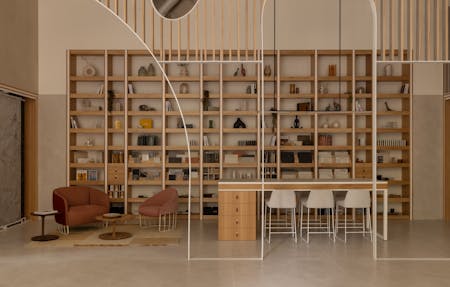Cosentino and InDesign present: Digital Disruptors in Design
Design industry leaders, professionals and students flocked to Melbourne this week for the annual InDesign conference. A number of speaker sessions were amongst the activities which took place over the two days where industry thought leaders discussed developments in, and the issues confronting the design industry. One of the most hotly anticipated panels focused on Digital Disruptors in Design and was brought to the conference by Cosentino and held at the VzuG Showroom in Kew East.
The Panel:
- Samantha Eades, Design Director, The Stylesmiths
- Shane Nagle, Learning Advisor, Swinburne Online
- Chris Free, Design Associate, Unispace
- Simon Goodrich, Founder, Portable
All of the panellists hold different positions in the design world, but they’ve all integrated digitisation into their business affairs to varying degrees. The group discussed how the integration of digital into their day-to-day professions has impacted the way they work and provided their overall thoughts on the use of digital in design including when it add values and when it doesn’t.
Key outtakes:
1. Don’t be pure digital, face to face is still key to trust in the design world
- Establishing trust is integral to success in the design industry. More often than not, working in design involves working with a client to bring their vision to life. This can’t be done without the client’s trust in the designer and this trust is hard come by through solely online interaction. Face-to-face communication is vital.
- This is something noted by Samantha Eades. Even though the most visual part of her business Stylesmiths is an online platform connecting interior designers to clients looking for design services, she says that each one of her designers will meet with their client in person to progress the job.
- Trust is also something Shane Nagle of Swinburne University finds difficult to establish with his online design students. Without having met him, he doesn’t believe he can establish with them the rapport he has with his in-person students.
2. Digitalisation can expand the footprint of design services and accessibility
- Incorporating digital into bricks and mortar business can expand the digital footprint of the services on offer and increase the accessibility of services to potential customers.
- Samantha’s business, Stylesmiths works off the shared economy business model, similar to Uber and Airbnb. She created it because she considered the traditional interior design world to be elitist and discovered many potential customers were too intimidated to approach an interior designer the traditional way. She also noticed that increasingly, interior designers were going solo, so the industry needed a mechanic to be able to connect them to business.
3. The design industry is human driven
- Digitalisation is the way forward for many industries but for Design Associate’s Chris Free, the design industry is driven by humans so any technology that is created needs to enhance the human interaction, not replace it.
- In particular, design is a collaborative industry so in-person communication is vital. Technology can make these connections, but human interaction cannot be replaced. For instance, many times a client might choose inspiration from an image or moodbook they flick through with the designer.
4. Designers need to learn to be design thinkers first - For the panel, in order to be a designer, you can’t simply jump onto a computer and try to solve a problem. You need to first know how to be a design thinker. This requires experience in coming up with a solution to solve a design problem and can only be achieved through real world interaction and experience.






